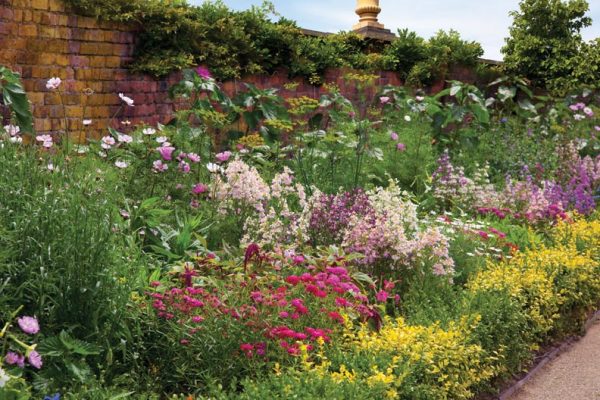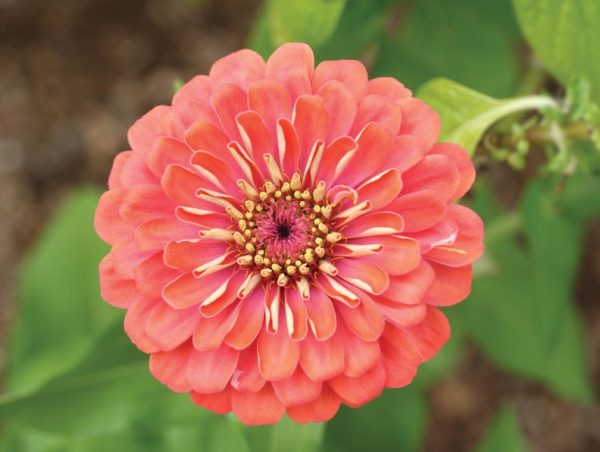
Achieving the maximum results in a cutting garden requires planning and patience. (Photo: Shelli Jensen/Fotolia.com)
I’ve had an on-again, off-again love affair with annual cutting gardens my entire horticultural career. The on-again part has to do with the wonderful luxury of being able to create your own fresh bouquets for pennies on the dollar. The off-again part has to do with the labor involved, especially the weeding. I’m heading for my 50th birthday this August, and as much as I’m loath to admit it, I can’t (or more precisely, don’t want to) do all the things I did willingly when I was 25, which included dropping down on all fours and spending a few hours plucking weeds in all types of weather. And make no mistake about it—even a well-mulched garden has to be weeded now and then. But there’s a big difference between now and then and constant, relentless upkeep, and I’m happy to share a few tips to help make a carefree cutting garden romance bloom in your garden this summer.
First and foremost, cutting gardens should be thought of as utilitarian harvesting spaces, not ornamental areas. That’s not to say that cutting gardens aren’t beautiful—they often are—but they shouldn’t have to be. That’s not their purpose, and many people, myself included, have driven themselves to distraction with the work involved in keeping a garden space both functional and lovely at the same time. Cutting gardens are the workhorses of the horticultural world, and as such should generally be located in areas that aren’t expected to be in 24/7 public view. For me, that means including the cutting garden in the vegetable garden. In fact, growing flowers in rows alongside the vegetables makes a lot of sense.

Zinnia ‘Décor’ is a charming mix of apricot and chartreuse that arranges itself. (Photo: Photoncatcher36/Fotolia.com)
A wide row system, in which seeds are scattered thickly across 1′-wide planting beds separated by 3′ walking areas, is ideal—both for the plants and for you. The key is to remember that most cutting flowers are annuals, which grow abundant, wide, and tall over the course of the summer. Plant them without ample walking spaces (and support—you often need staking), and you’ll soon have to wade through a jungle just to cut a single bloom—a discouraging prospect on a hot, rainy August day.
Critical to this layout scheme is using professional-grade, woven polypropylene fabric over the pathways to prevent weed growth. I’m not talking the landscape fabric you see commonly sold in big-box stores. That stuff is, to use the vernacular, a royal pain: It is hard to lay, doesn’t stay put, and often accumulates pockets of soil and debris where weeds thrive. The material I’m referring to is what you see in many nurseries resting under their container plants, and is a more durable cousin to the fabric used to bag oranges—except the garden version has been UV-stabilized and is designed for intensive multiyear use.

Annuals planted from seed produce the lush effect seen here. (Photo: Dar_St/Fotolia.com)
You can buy it online or at greenhouse supply stores, and it’s generally sold with “garden staples,” 4″ double-spiked pins that hold the fabric down with ease. The material also has enough heft to allow you to walk on it easily, and if you prepare the paths well, leveling them nicely and then pulling the fabric taut over the walkways, polypropylene provides a durable, year-round surface. Some gardeners, myself included, object to the look of a lot of black plastic in the garden; frankly though, it’s really only visible in the early stages of the season when the plants are young. Once the annuals are up and growing, you can barely see it. If the fabric still seems a little overwhelming, you can spread a light coating of mulch to hide it. The critical element here is “light”: just enough to hide the fabric, but not enough to provide firm anchor for weeds, or else you defeat your entire purpose.
Don’t buy pre-started annuals. Instead, directly sow seeds into the garden once the soil has warmed in your area above 60ºF. There are several reasons for this. The first is cost: Package annuals are expensive, and even a small-sized cutting garden will consume many, many flats, thereby destroying the price advantage of growing your own flowers. Pre-packed annuals are really only meant for areas where immediate aesthetics are of concern: No one wants a front garden bed or border that is entirely bare for several weeks. But in a cutting garden, that isn’t an issue; here you can harvest the rewards of a little patience.

Feverfew ‘White Wonder’ is great for fillers and will rebloom if kept cut back. (Photo: Peter Kovacs/Fotolia.com)
The fact is that most annuals mature better and healthier if allowed to grow in a single spot from seed as nature intended. I’ve often been amazed to see how self-sown annuals, descended from the year previous, have rapidly outstripped plants I have purchased and planted from the nursery. All that’s required is to sow the seed thickly according to package instructions and wait. You’ll have to do a bit of thinning to be sure, and a single pass of hand weeding around the new sprouts, but once the annuals take hold they will crowd out their competition without much help from you. Another factor arguing for seed rather than transplants: variety. There are simply so many beautiful cutting flowers you can grow only from seed.
Remember that flowering annuals, like most vegetables (which are also primarily annuals) require a deep, rich, well-prepared soil in order to thrive. Just throwing some seeds in ill-prepared ground is not going to provide those luscious blooms you see in pictures. Annuals need to finish their entire life cycle in a single season, from sprouting to flowering to producing seed for the next generation, and to do that they need ample water and nutrients. If you spend some effort tending to your soil before sowing, you’ll be amply rewarded.
Finally, keep in mind that though I have concentrated here on annuals for cutting, there are many wonderful perennials that can be used in a similar fashion: Spring bulbs, iris, rudbeckia, alchemilla, lilies, and a host of others spring to mind, and when grown using the wide row method, easily provide armloads of flowers for the summer table or mantelpiece.







